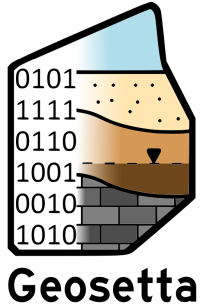
Why Geosetta?
- Non-profit structure ensures independence and serves the profession, not shareholders
- 500,000+ boring logs from state DOT sources across the US
- ML-powered predictions provide preliminary subsurface understanding
- Open format enables sharing and collaboration
- Not a substitute for site-specific investigation
Research & Publications
Geosetta was founded on research conducted for the Maryland State Highway Administration. Below are the foundational reports and subsequent publications that have utilized or contributed to Geosetta's development:
Foundational Research
Machine Learning Techniques for SPT Based Geotechnical Subsurface Modeling
Maryland State Highway Administration (2021)
Report No. MD-21-SHA/UM/5-23
This groundbreaking report established the machine learning methodology that forms the core of Geosetta's predictive capabilities, demonstrating how neural networks can effectively predict subsurface conditions from SPT data.
View ReportDeveloping a GIS-Based Platform for Managing Boring Log Requests and Geotechnical Data
Maryland State Highway Administration (2018)
Report No. MD-18-SHA/UM/4-52
This report laid the foundation for Geosetta's platform architecture, outlining the need for and design of a centralized system for managing and sharing geotechnical data across agencies.
View ReportPublications Using Geosetta
A Methodology for Comparison of Algorithm-Based Subsurface Predictions with Geotechnical and Geophysical Data
Ghimire, A., Yost, K.M., Ph.D., M.ASCE, Cutts, R., M.ASCE, and Zhu, T., Ph.D.
Pennsylvania State University
This study validates Geosetta's AI-based predictions by comparing them with high-quality geophysical data from Multichannel Analysis of Surface Waves (MASW) testing and traditional geotechnical boring data collected at Pennsylvania State University. The research investigates methods for comparing predictions including direct strata delineation comparison and Site Class computation based on VS30.
Citing Geosetta
If you use Geosetta in your research or professional work, please cite it as:
Geosetta, Inc. (2024). Geosetta: A Comprehensive Geotechnical Database Platform. Available at: https://geosetta.org
For specific datasets, please include the data source (e.g., VDOT, MDOT, MnDOT) and access date in your citation.
Have you published research using Geosetta? We'd love to feature your work! Please contact us at research@geosetta.org with your publication details.
Education & Outreach
Geosetta is being integrated into undergraduate and graduate geotechnical engineering curricula to give students hands-on experience with real-world data and modern site characterization workflows.
In The Classroom
Virginia Tech - Foundation Design Course
CEE 4534: Earth Pressures and Foundation Structures
Instructor: Prof. Joseph P. Vantassel, PhD, Assistant Professor
"I have integrated Geosetta into the undergraduate foundation design course I teach, demonstrating it as part of site characterization alongside aerial photography and geologic maps. I created a homework to give students experience with desktop studies for a real bridge reconstruction project in Roanoke."
Students use Geosetta to analyze real boring log data and develop geotechnical profiles for infrastructure design projects.
View Homework AssignmentTeach with Geosetta
Are you an educator interested in integrating Geosetta into your curriculum? We provide:
- Free access to all data and tools
- Support for developing course materials
- Real-world datasets for student projects
- Opportunities to collaborate on educational research
Contact us at education@geosetta.org to discuss how Geosetta can support your teaching.